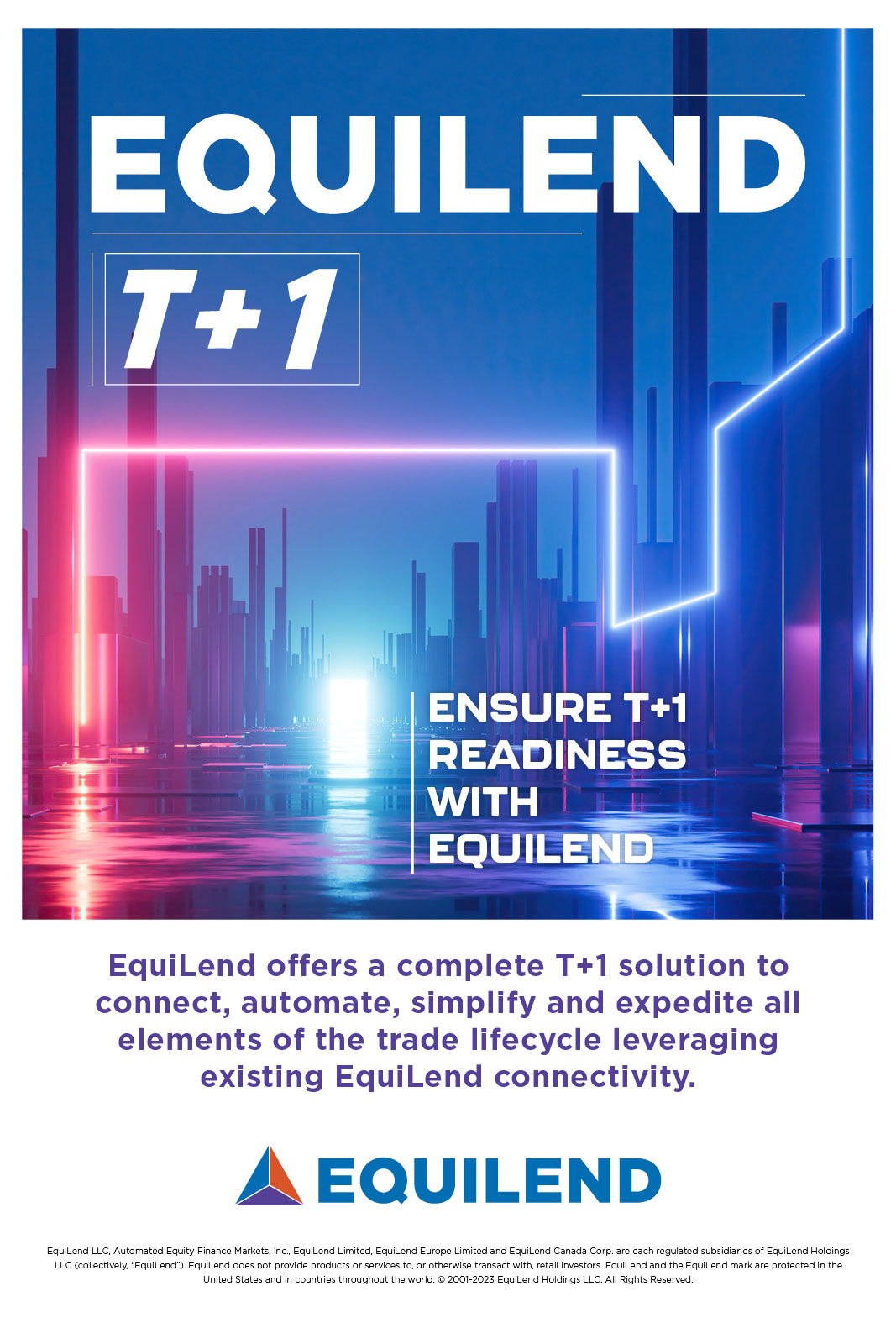CSDR will damage securities lending market, says ISLA
11 August 2015 London
 Image: Shutterstock
Image: Shutterstock
The International Securities Lending Association (ISLA) “fundamentally disagrees” with the Central Securities Depository Regulation’s (CSDR) implementation of mandatory buy-ins for securities lending transactions, which would negatively affect the lending market, it claims.
In a letter sent to the European Securities and Markets Authority (ESMA) on 6 August, the association cites “highly complex rules”, “dramatically increased costs”, additional risk exposure and a lack of supportive data as some of the reasons that mandatory buy-ins will deter investors from making their securities available for borrowing.
ISLA goes on to clarify that despite its overall objection its members, “favour Option 1 proposed ESMA, with the trading parties being responsible for executing the buy-in, either directly or by appointing agents for the purpose”.
The fact that the securities lending is largely considered 'ancillary' to most investors primary investment strategies leads ISLA to argue that the market would not benefit from onerous regulation and penalties, such as mandatory buy-ins, as investors would rather leave the lending space than comply.
ISLA’s letter is its second scathing analysis of the CSDR by the association. The first response was published in February.
ESMA also published its own updated technical advice to the European Commission on 4 August, which called for standardised EU buy-in rates and the implementation of proportional penalty fees for failed deliveries.
Another major criticism that ISLA levels at the CSDR is that mandatory buy-ins for all lending activity will not take into account the fact that, in the event of a failure of delivery due to a securities recall, a buy-in could be activated despite evidence that recalls are “typically for reasons other than to execute a sale”.
“A failed securities loan return here could result in a buy-in which in turn could lead to the failed to party receiving a cash equivalent if they or their agent cannot execute a buy-in,” explained ISLA.
In this instance, a failed buy-in would contradict standard recall procedure as the lender might be provided with cash to re-purchase an equivalent security, which may have increased in price and therefore leave the lender with an overall loss from the transaction.
ISLA offers an alternative option to this issue, stating: “It would be better if the buy-in for a failing securities loan or return was remedied with a replacement loan. We believe that it may be possible to interpret the Level 1 text in this way and this would have the advantage of allowing the settlement failure to be remedied, without creating the additional market exposures and risks associated with a purchased buy-in of the position’.
The letter’s closing remarks reiterated the association’s previous request for a more detailed definition of terms such as “participant”, as well recommending that, in response to ESMA’s February advice on Level 1, “implementation of the CSDR regime should not occur before the T2S [Target2-Securites settlement] system is fully operational and thought should be given to whether a phased approach from that time would be preferable”.
In a letter sent to the European Securities and Markets Authority (ESMA) on 6 August, the association cites “highly complex rules”, “dramatically increased costs”, additional risk exposure and a lack of supportive data as some of the reasons that mandatory buy-ins will deter investors from making their securities available for borrowing.
ISLA goes on to clarify that despite its overall objection its members, “favour Option 1 proposed ESMA, with the trading parties being responsible for executing the buy-in, either directly or by appointing agents for the purpose”.
The fact that the securities lending is largely considered 'ancillary' to most investors primary investment strategies leads ISLA to argue that the market would not benefit from onerous regulation and penalties, such as mandatory buy-ins, as investors would rather leave the lending space than comply.
ISLA’s letter is its second scathing analysis of the CSDR by the association. The first response was published in February.
ESMA also published its own updated technical advice to the European Commission on 4 August, which called for standardised EU buy-in rates and the implementation of proportional penalty fees for failed deliveries.
Another major criticism that ISLA levels at the CSDR is that mandatory buy-ins for all lending activity will not take into account the fact that, in the event of a failure of delivery due to a securities recall, a buy-in could be activated despite evidence that recalls are “typically for reasons other than to execute a sale”.
“A failed securities loan return here could result in a buy-in which in turn could lead to the failed to party receiving a cash equivalent if they or their agent cannot execute a buy-in,” explained ISLA.
In this instance, a failed buy-in would contradict standard recall procedure as the lender might be provided with cash to re-purchase an equivalent security, which may have increased in price and therefore leave the lender with an overall loss from the transaction.
ISLA offers an alternative option to this issue, stating: “It would be better if the buy-in for a failing securities loan or return was remedied with a replacement loan. We believe that it may be possible to interpret the Level 1 text in this way and this would have the advantage of allowing the settlement failure to be remedied, without creating the additional market exposures and risks associated with a purchased buy-in of the position’.
The letter’s closing remarks reiterated the association’s previous request for a more detailed definition of terms such as “participant”, as well recommending that, in response to ESMA’s February advice on Level 1, “implementation of the CSDR regime should not occur before the T2S [Target2-Securites settlement] system is fully operational and thought should be given to whether a phased approach from that time would be preferable”.
NO FEE, NO RISK
100% ON RETURNS If you invest in only one securities finance news source this year, make sure it is your free subscription to Securities Finance Times
100% ON RETURNS If you invest in only one securities finance news source this year, make sure it is your free subscription to Securities Finance Times



